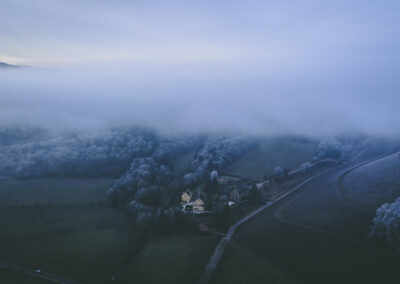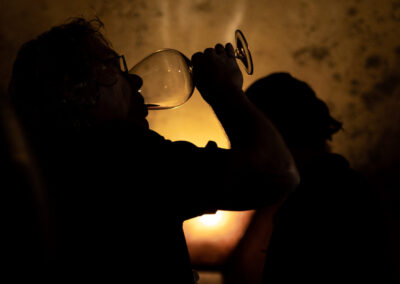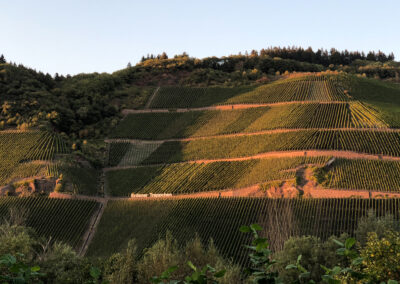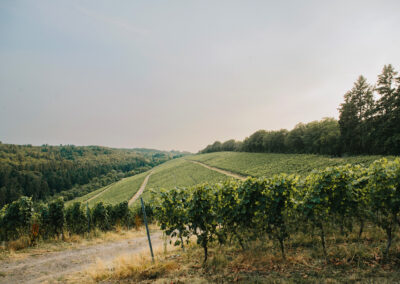This December we’re celebrating the importance of World Soil Day and the deliciousness of dessert wines. With World Soil Day just around the corner, we want to highlight the vital role that healthy soil plays in our lives and the environment. From growing our food to supporting biodiversity, soil is truly one of our planet’s most valuable resources. And what better way to enjoy a good meal this holiday season than by pairing it with a soil-driven Riesling and ending it with a glass of sweet, luscious dessert wine? Take a closer look at the soils of the Dr. Loosen estate vineyards and Robert Weil’s Kiedrich Gräfenberg Riesling Trockenbeerenauslese.
The Significance of World Soil Day
World Soil Day, celebrated on December 5th every year, emphasizes the importance of healthy soil and encourages sustainable management of soil resources. Healthy soil is crucial since it is responsible for more than 95% of the food we consume, and degradation caused by climate change and human activity poses a significant threat to our water resources. The Food and Agricultural Organization (FAO) unanimously endorsed World Soil Day in June 2013 to establish a global platform to raise awareness about soil health and sustainability.
Sustainable soil management practices can significantly improve soil health, reduce erosion and pollution, and increase water infiltration and storage. These practices also help maintain soil biodiversity, enhance fertility, and contribute to carbon sequestration, playing an essential role in the fight against climate change.

Blue slate cliff in the village of Bernkastel
The Dr. Loosen estate has implemented many sustainability measures since Ernst Loosen took over the operation in 1988. Erni realized he had undrafted vines averaging 60 years old in some of Germany’s greatest vineyards and made significant improvements to achieve intense, world-class wines. Erni restricts crop size, prohibits chemical fertilization, insists on strict fruit selection, and employs gentle cellar practices that allow the wine to develop its full potential with minimal handling.
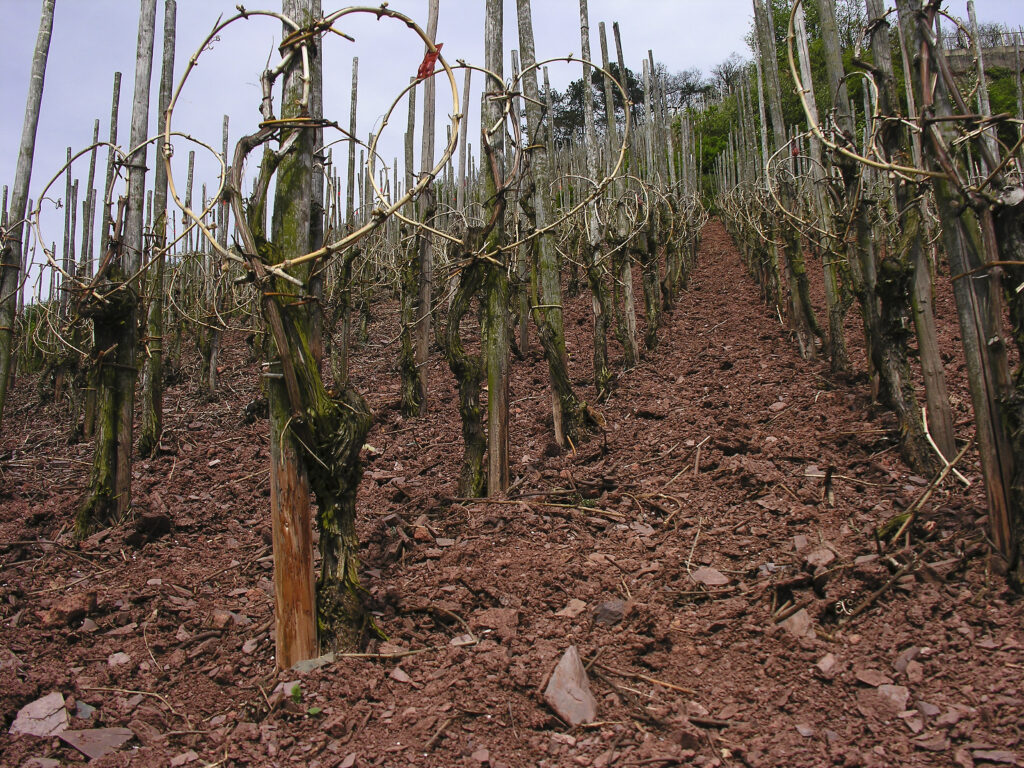
Red slate and volcanic soil in the Ürziger Würzgarten vineyard
The Dr. Loosen estate vineyards feature three primary soil types: blue slate, red slate, and a red volcanic conglomerate. Stony soil and rocky outcroppings in the Mosel region reflect sunlight and retain heat, creating optimal vineyard climates, and resulting in excellent ripeness. Thin, rocky topsoil forces the vines to dig deeper for water and nutrients, producing vibrant wines that capture the strong mineral character of the soil.
Blue Slate
The slate found in the villages of Bernkastel, Graach, and Wehlen is the most common type of slate in the middle Mosel region. This soil is rich in potassium, providing essential nutrients to the vines. It gives the wines a delicate fruitiness and a distinct mineral edge that complements the naturally high acidity of Riesling.
Blue slate vineyards:
- Bernkasteler Lay
- Bernkasteler Johannisbrünnchen
- Wehlener Sonnenuhr
- Graacher Himmelreich
- Graacher Domprobst
Red Slate
Iron-rich red slate can be difficult to come by in the Mosel, it’s primarily present in the villages of Erden and Ürzig. The red slate’s unique characteristics give the wines a focus on stone fruits and a dense, muscular minerality that sets them apart.
Red slate vineyards:
- Lösnich Fösterlay
- Erdener Treppchen
- Erdener Prälat
- Ürziger Würzgarten (on either side of the village)
Red Volcanic Sandstone
The distinctive, crumbly, red volcanic sandstone found solely in the Ürziger Würzgarten vineyard contributes to the character of its wines. These wines feature more exotic fruit, a lusher texture on the palate, and a spicy edge that reflects the vineyard’s fitting moniker –– “Spice Garden.”
Red volcanic sandstone vineyards:
- Ürziger Würzgarten (center of the vineyard, directly behind the village)
The World of Riesling Dessert Wines
Dessert wines are a decadent treat that can elevate your post-dinner experience. Typically enjoyed after a meal, but also excellent as an aperitif or intermezzo, these indulgent wines are especially fitting for holiday occasions. To make dessert wines, the grapes remain on the vine for an extended period, allowing them to ripen and develop higher sugar content. This process can result in the grapes becoming raisin-like, creating a concentrated sweetness that distinguishes dessert wines from other varieties. During the winemaking process, the high must weights inhibit the fermentation before the yeast converts all of the grape sugars into alcohol, thus leaving a delicious dose of natural sweetness.
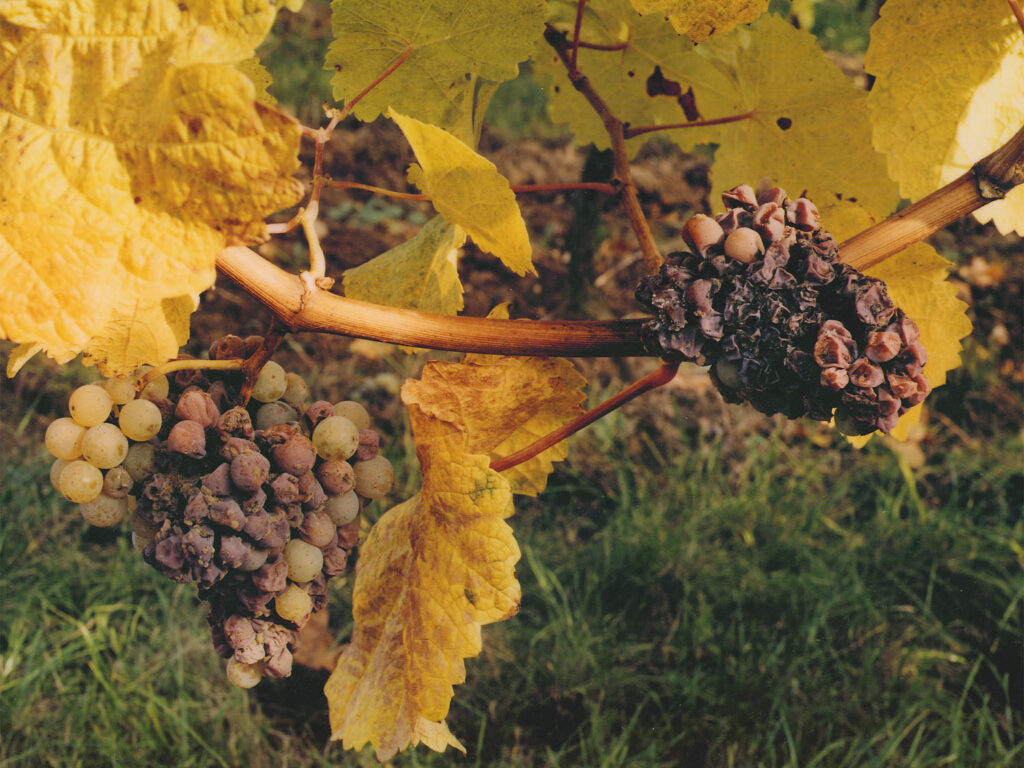
Riesling botrytis clusters on the vine
Botrytis, also known as “noble rot,” takes the late harvest concept a step further. Botrytis is a potentially beneficial fungus that, under ideal weather conditions, shrivels the grapes intensifying sweetness and enhancing flavor in the finished wine. This process can result in grapes becoming raisin-like, creating a concentrated sweetness that distinguishes dessert wines from other styles.
Auslese, which means “selected from the harvest,” is a medium-sweet Riesling made from clusters of very ripe grapes that have been partially affected by botrytis.
Beerenauslese, meaning “berry selection,” is richer and denser than Auslese. It is made from fully botrytis-affected grapes that have shriveled about halfway to raisins.
The most intense dessert-style Riesling is Trockenbeerenauslese (“dried berry selection”). This labor-intensive and intensely concentrated wine is made by hand-selecting only individual, fully shriveled, botrytis-affected grapes. The tiny amount of ultra-sweet wine that results is multi-layered and deeply complex.
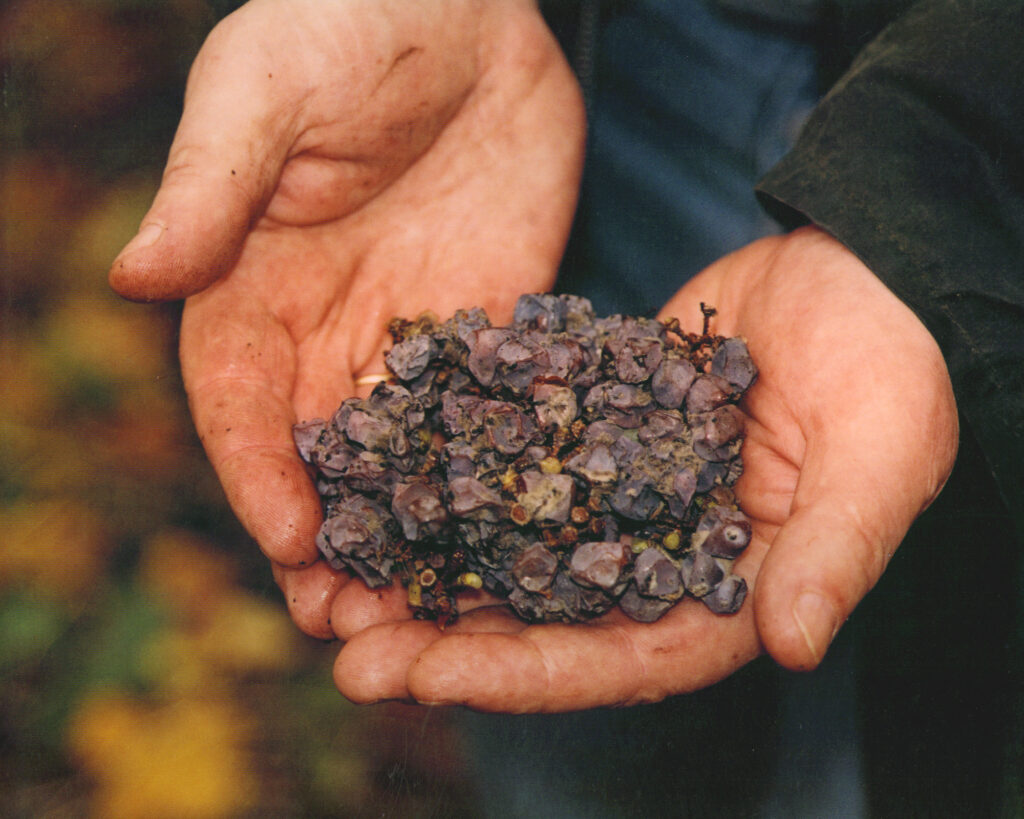
Full shriveled grapes that will become Trockenbeerenauslese
Robert Weil Kidrich Gräfenberg Riesling Trockenbeerenauslese
Crafted from meticulously handpicked, fully dried botrytis-affected grapes, this wine boasts an exquisite density and a luxurious palate of opulent flavors that harmoniously balance between lively acidity and elevated levels of inherent sweetness. It’s a wine that will undoubtedly benefit from extended aging, and its full potential will continue to reveal itself in years to come.
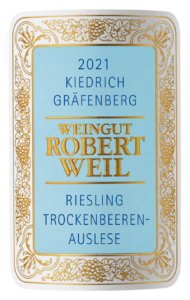 A Pedigree of Excellence
A Pedigree of Excellence
2022 Vintage
- [99 points] James Suckling
2021 Vintage
- [99 points] James Suckling
- [98+ points] Wine Advocate
- [98 points] Wine Enthusiast –– #28 Top 100 Cellar Selections 2023
2020 Vintage
- [100 points] James Suckling
- [99 points] Wine Advocate
- [97 points] Wine Spectator
2019 Vintage
- [100 points] James Suckling
- [98+ points] Wine Advocate


